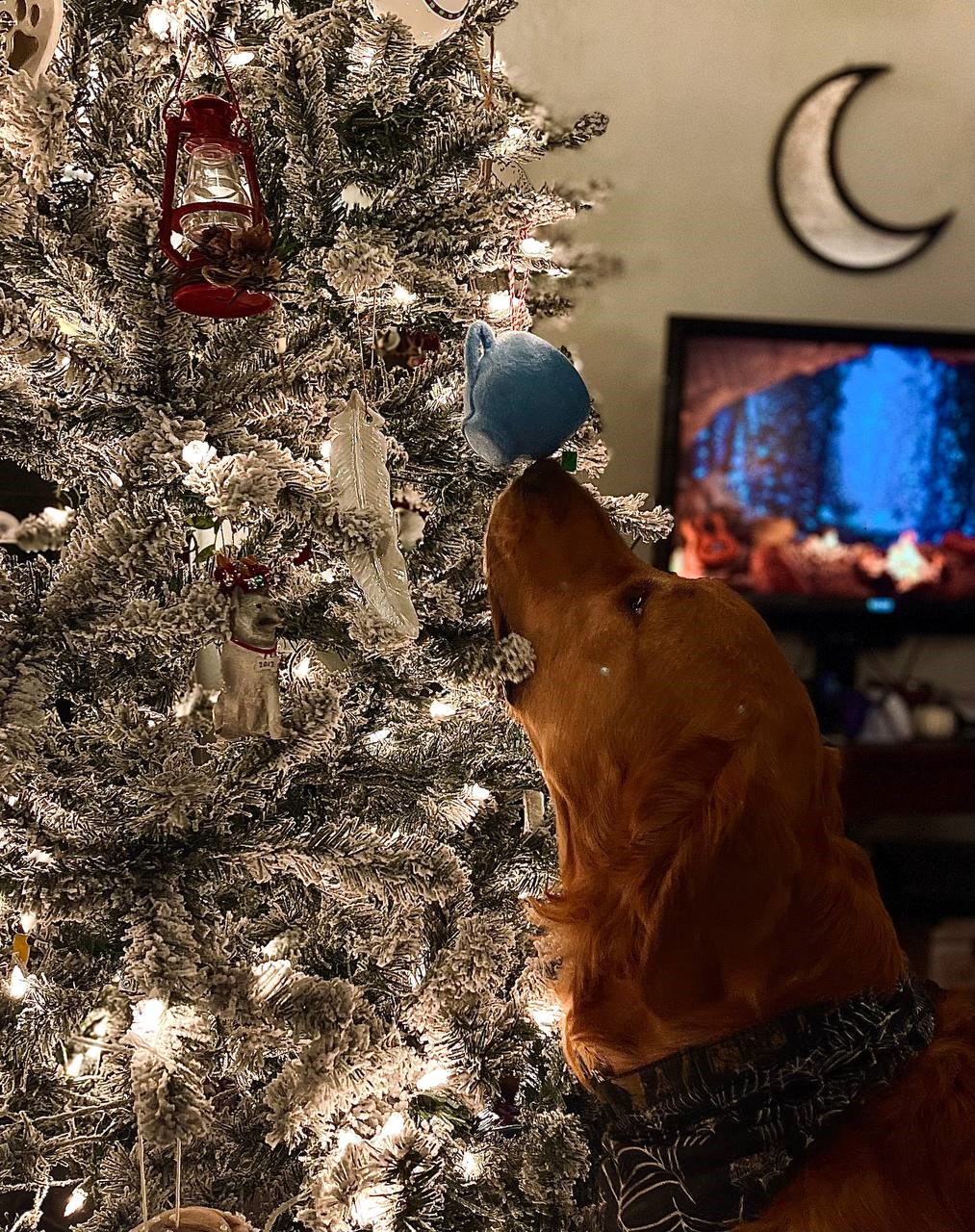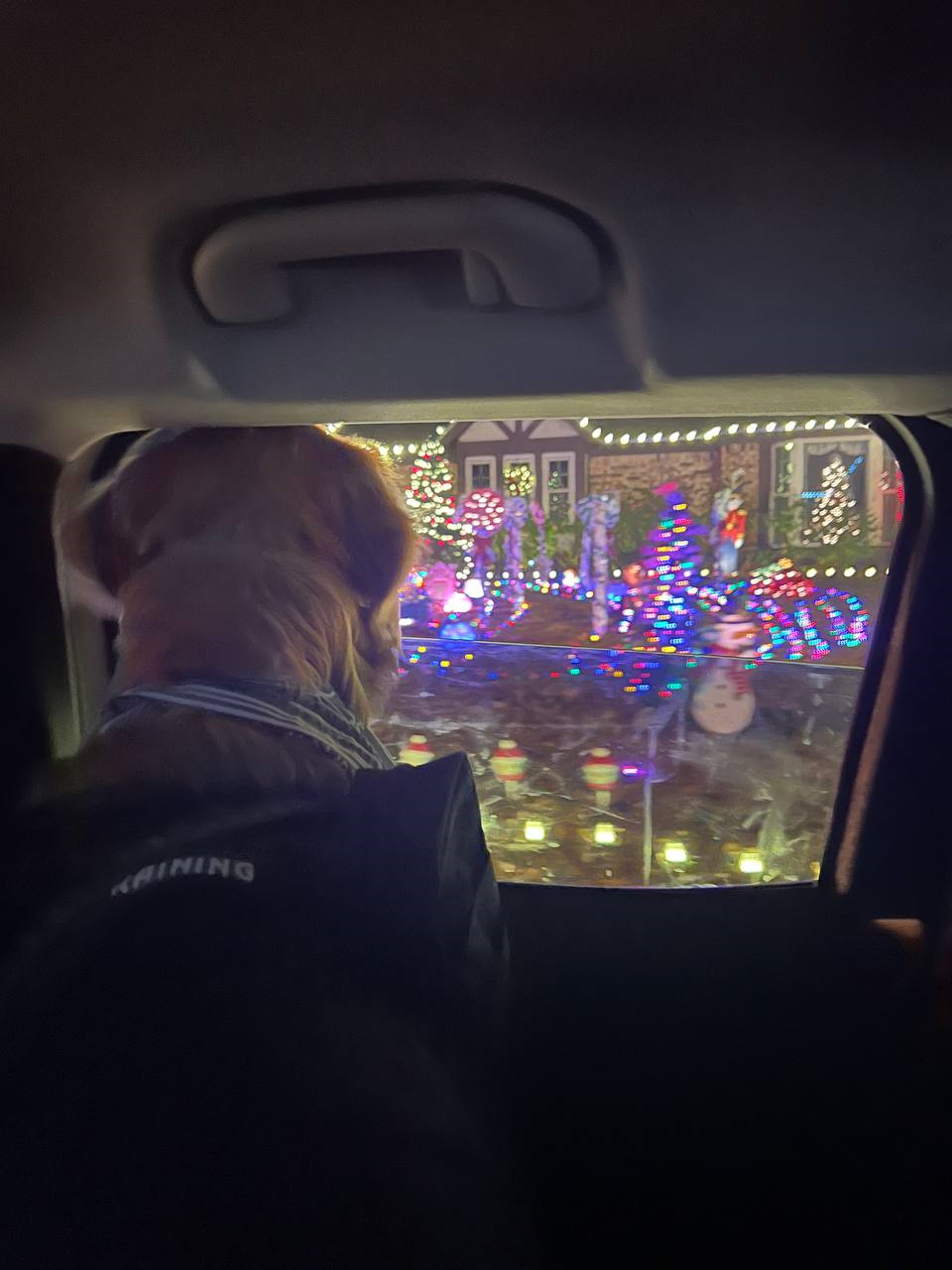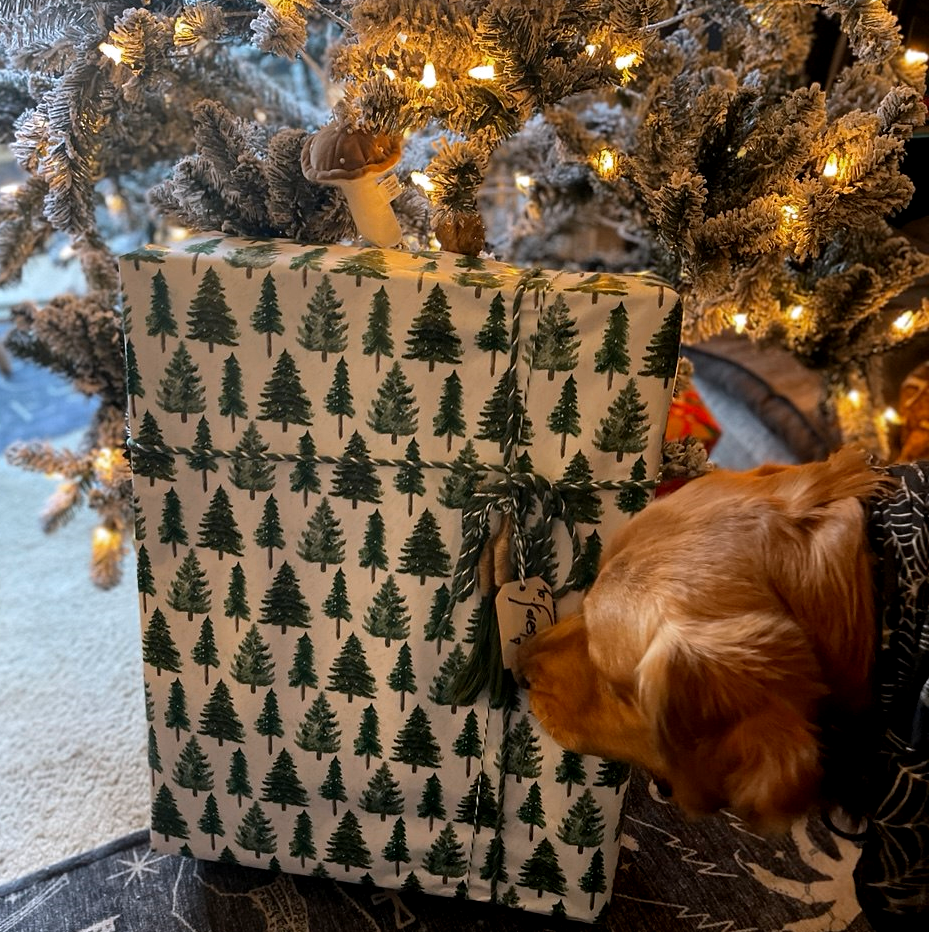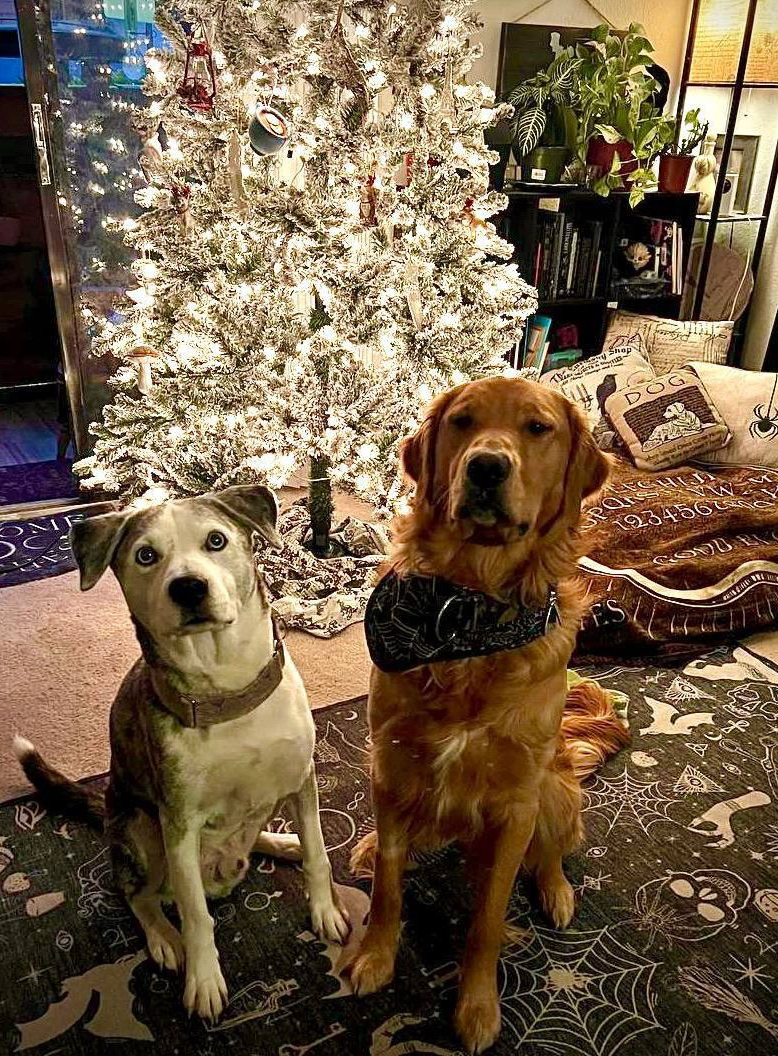Holiday Manners for Dogs
The holiday season can be a hectic time, especially when it comes to managing our dogs. Whether you're traveling or hosting guests, it's essential to set boundaries and expectations for your dog to ensure everyone has a safe and enjoyable holiday.
Some people board their dogs over the holidays because of behavior issues, while others may confine their pets to crates or laundry rooms. These are often the dogs that jump on guests, try to dash out the door, or snatch food from the table. Today, we’ll go over how to get your dog ready for the holidays—or any event like birthdays or family gatherings—so they can be well-behaved and safe.

Start Preparing Now
One of my key tips is: Don’t wait until it’s an emergency to practice. By "emergency," I don't mean a real emergency; I mean don't wait until the in-laws are at the door to practice staying on place while opening the door. Start practicing now with your husband or wife, or with your kids and get your dogs good at doing this in a controlled moment. You could even simulate with your family members as if an unexpected guest showed up. Have your significant other come home from work and come in through the front, have them ring the doorbell and wait while you practice a good "Place" command before they ever come in.
Place Command
This is a great place to start for setting boundaries. It's a tricky skill to learn since there are a lot of moving parts, but it's pretty standard in some training classes and a lot of pets have taken them so brushing up on this skill would really help during those times! The sooner you start on this one the better because it does take a bit of time to master over longer duration and more challenging circumstances.
Start by reinforcing "place" in low-distraction environments. Make sure the spot you choose—whether a mat, bed, or designated area—is comfortable and always the same. Gradually build up the time your dog stays in place, starting with short periods and working up to longer durations. You can also practice adding distractions, such as guests ringing the doorbell or knocking.
Be sure to reward your dog for staying in place. Use high-value treats or their favorite toy to reinforce the behavior. Consistency is essential, so keep practicing regularly leading up to the holidays!
Crate Training for Stressful Situations
Crates are invaluable for managing dogs safely, especially if they’re trained to see it as their safe space. Many dogs find the hustle and bustle of holiday gatherings overwhelming, and a crate gives them a retreat. If your dog isn’t fully crate-trained yet, now is the time to start. Begin by introducing the crate in a positive way. Use treats, favorite toys, and lots of praise when your dog enters the crate willingly. Don’t force them in. Gradually increase the amount of time they spend in the crate while you're home, and make sure it’s a comfortable space with their bed, blankets, or a calming toy. You can even feed them their meals in the crate to help build a positive association to the crate.
Before the holidays, use the crate while having guests over for short periods. This will help your dog associate the crate with a calm space, and they’ll be more comfortable retreating there when holiday gatherings become stressful.
Managing Energy Levels
Excitable dogs vs anxious dogs - Know the difference:
Excitable dogs often struggle more with holiday gatherings due to pent-up energy. Regular exercise and mental stimulation can work wonders for keeping their behavior in check. Before guests arrive, make sure your dog gets plenty of exercise—a long walk or a good play session in the yard can go a long way in burning off energy.
Interactive toys, puzzle feeders, or treat-dispensing toys are great for keeping your dog mentally stimulated when you’re busy hosting. These distractions can help reduce behaviors like jumping or excessive barking during the holiday excitement.
Anxious dogs might struggle with new people and changes and may require a different approach. A walk is good so long as it does not stress your dog further. For them, some mental exercises may be better, like brushing up on some training, or doing some enrichment, but also making sure they have access to places they can go to feel comfortable. Early may be a good time for those calming chews or vet prescribed medications.

Leave it - The True meaning of “No”
Remembering the True meaning of “No”
Make sure you dedicate time to the important skills.
“Leave it” is a very, very important skill to brush up on. There are a lot of foods we eat that are toxic to dogs, so having a pretty solid “leave it” will help here - But not just with food! Jumping on Grandma? Chasing the kids? If we can get a better “Leave it”, use that for your dog when they are obsessing over company or barking at the kids playing outside.
Socializing Your Dog with Strangers
If your dog isn’t used to meeting new people often, holiday guests may be a source of anxiety. Gradually introducing your dog to new experiences ahead of time can make a big difference. You can start by inviting friends or neighbors over for short visits to practice polite greetings. Keep these encounters calm, and reward your dog for staying composed. Use positive reinforcement—treats, praise, and toys—to create a positive association with new people. The goal is to reduce anxiety and prevent behaviors like jumping or barking. However, it’s never a good idea to force your dog into stressful situations, so go slow, encourage your dog to be confident and don’t reward fear! If you find your dog is too overwhelmed, take breaks and dedicate more time to working them up to these difficult moments.

Managing the Environment
Sometimes the best way to prevent unwanted behaviors is to manage the environment your dog is in.
No Dogs in the Kitchen
One of my top rules is keeping dogs out of the kitchen. This helps prevent accidents like ingesting harmful foods, tripping hazards, and burns from hot food. It also reduces the chances of dogs counter-surfing or begging.
Baby Gates
Baby gates are excellent tools for keeping your dog out of certain areas or contained in others. Placing a baby gate by the door, for example, can manage jumping and keep your dog from bolting out. Not just that, though, you can also utilize them to put them around your tree and protect your gifts!
Leashes
Don’t hesitate to keep your dog on a leash when guests arrive or while lounging. A leash allows you to monitor their behavior closely, prevent counter-surfing, and stop them from chewing on presents under the tree.
Crates
Crates are invaluable for managing dogs safely, especially if they’re trained to see it as their safe space. With so much activity around the holidays, a crate gives your dog a calm place to retreat. It also prevents them from getting overstimulated or overwhelmed by guests.

Be Mindful of Guests
When family and friends are visiting from out of town, it’s essential to be mindful of how your dog interacts with them. Not everyone knows how to properly interact with dogs, and guests could unintentionally reinforce bad behavior or create unsafe situations.
Kids
Has your dog ever met a child before? Are the children comfortable around dogs? Make sure everyone knows the boundaries—kids need to respect your dog’s space, and you’ll want to supervise interactions to prevent accidents like knocking a child over or getting scratched by a playful pup.
Grandma
If your dog jumps, there’s a risk they could knock over or injure someone with more sensitive skin, like Grandma. Also, make sure she doesn’t sneak treats to your dog under the table—some foods we eat are toxic to dogs!
Uncle Greg
Maybe Uncle Greg has watched a few too many dog training shows and thinks he can train your dog on the spot. However, his methods may not align with yours, and your dog may not respond well to his approach. It's important to set boundaries with guests to prevent stressful situations.
Aunt Linda
Aunt Linda may be unfamiliar with dogs and might not know how to close the door securely behind her. Be sure to brief all your guests on how to interact with your dog and what safety measures to follow.
Keep Tabs on Your Dog
Accidents happen when we’re not paying attention. Use baby gates, leashes, and crates to ensure your dog is always accounted for, especially in a busy household. These tools will help you manage your dog's safety and behavior during the holiday rush.
Recognizing Signs of Stress
It’s important to watch for signs of stress in your dog during the holidays. Overexcitement, loud noises, and unfamiliar faces can overwhelm dogs, leading to behaviors like pacing, excessive panting, or hiding. If you notice your dog showing signs of stress, it may be time for a break.
Guide your dog to their crate or a quiet room where they can decompress away from the action. Giving your dog space to relax and calm down will help prevent them from becoming overwhelmed or reactive.
What Foods Are Safe and Toxic for Dogs?

| Safe in Moderation | Toxic |
|
|
Now, just because something is safe, doesn't mean it couldn't possibly upset your dog's stomach. Everyone is different and so is every dog. Remember to consider your pet's medical history especially for dogs with pancreatitis or diabetes. When in doubt, it's best to just stick to your dog's regular food!
Happy Howlidays from our family to yours! Stay safe!